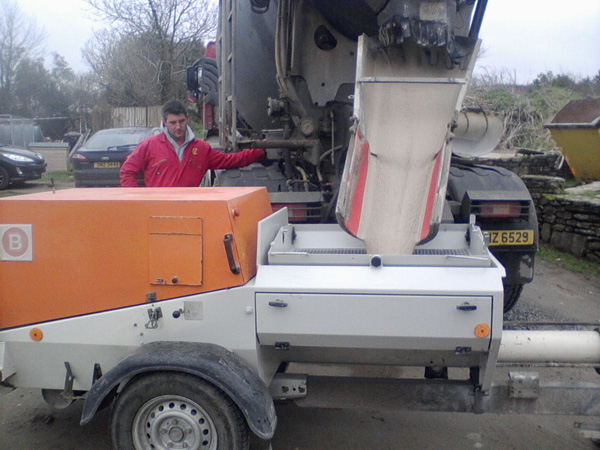Flotherm Liquid Screed
W&J Chambers
What is it?
FloTherm Liquid Screed is a specially formulated calcium sulphate self levelling (flowing) floor screed.
Benefits over traditional sand and cement screed:
- Quicker to lay
- Thinner screed depth
- Less labour intensive
- Much lower risk of shrinkage or cracking
- Up to 1000m2 can be applied daily
Main benefits are seen when they are used with under floor heating systems. For example flowing anhydrite screeds fully encapsulate the heating pipes without voids and need only to cover the pipes by 25mm, resulting in a much more responsive heating system which in turn is more economical to run.


Preparation
The building must be weather tight prior to the placing of any screed material: the roof; external doors and windows must be in place and closed or covered and taped to prevent draughts.
Bonded constructions should be clean and thoroughly sound; they should be free from standing water, oils, grease, dust, loose particles or any other contaminants which may interfere with adhesion.
Unbonded constructions (floating/under floor heating systems) all insulation boards should be installed in such a way as to provide a clean even base. A suitable (500μm) polythene sheet should be applied over the insulation. All joints should be lapped to 100mm and fully taped. A suitable 5-10mm PE foam expansion strip should be fitted to the full depth of screed around the entire perimeter of the floor.
Corners and joints should be constructed neatly and taped to form a watertight seal. All openings should be suitably sealed to prevent screed material escaping. Heating pipes should be laid as required and mechanically fixed every 300mm. It is recommended to also fill pipes with water to prevent lifting. Isolation strips should be placed in door thresholds where there is likely to be a difference in operating temperature in under floor heating circuits.
It is recommended to leave designated areas without under floor heating pipes and clearly mark their location to allow the easy sampling for CM moisture readings without risk of damage to the heating system.
Application
The screed should be pumped into place using a suitable pump. The level should be set with tripod markers and a suitable laser level or water level before pumping commences. After placing, the screed should be lightly tamped with T-bars to ensure full compaction.
The screed should be protected from draughts during installation and for the first 3 days and should be dry before covering. This can be accelerated by the use of dehumidifiers or by commissioning of the heating system after 7 days.
Depending on the mix design, application and requirements of the floor covering it may be necessary to remove surface laitance. This can usually be accomplished by brushing with a stiff brush but may require the use of a floor buffer fitted with a suitable grinding disk. The removal of laitance is normally carried out after 7 days depending on site conditions.


